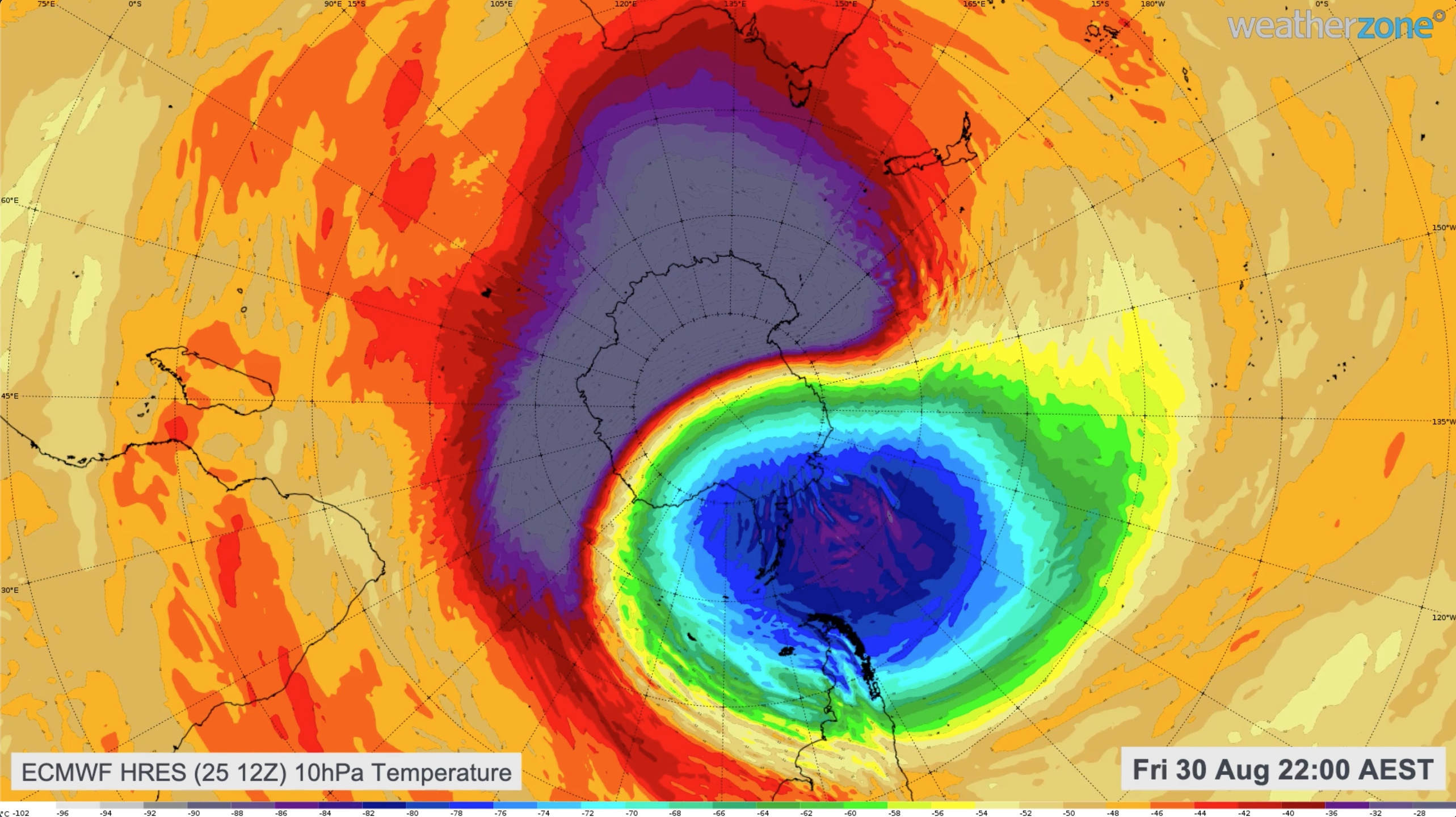Sudden stratospheric warming: what it means for Australia

A sudden stratospheric warming event is occurring near the south pole this week, a rare phenomenon that could affect weather patterns in the southern hemisphere during the opening weeks of spring.
Sudden stratospheric warming occurs when the air temperature rises rapidly in a layer of the atmosphere called the stratosphere. This warming is happening around 30-40km above the ground, so we can't feel its effects on the ground just yet. However, some places in the southern hemisphere could be affected in the coming weeks.
A Sudden Stratospheric Warming event is still forecast to peak on Friday 30 August over Antarctica.
— NIWA Weather (@NiwaWeather) August 26, 2019
🗣� Impacts take time to trickle down through the atmosphere, but particularly unsettled weather conditions may unfold around NZ starting in the 1st or 2nd week of September. pic.twitter.com/WD3wKHPpdT
Strong sudden stratospheric warming events can cause a vortex of cold polar air that usually sits locked above Antarctica - aptly named the polar vortex - to temporarily move away from from the south pole and drift into the mid-latitudes (towards the equator).
This displacement of the polar vortex in the stratosphere can affect weather patterns in lower levels of the atmosphere during the following weeks or even months.
Research has found that strong sudden stratospheric warming events occur over the Arctic around six times each decade. According to Ben Noll from New Zealand's National Institute of Water and Atmospheric Research, only two sudden stratospheric warming events have been recorded in the southern hemisphere during the last six decades.
There have only been two sudden stratospheric warming events in the Southern Hemisphere on record: Sept 2002 & 2010.
— Ben Noll (@BenNollWeather) August 21, 2019
🚨 That may change next week, as model guidance is forecasting temperature anomalies up to +60˚C at 10 hPa over Antarctica! 🚨
🔴 contour = +25˚C anomaly 👇 pic.twitter.com/hhSdKvNvBZ
Computer models clearly show that stratospheric warming is occurring in the upper-atmosphere this week. However, it's too early for models to predict what impact this will have on the weather closer to the ground during the weeks or months ahead.
Polar air from above Antarctica will initially shift towards South America. It's possible that this will set off a chain of events that may affect weather systems around Australia's longitudes in the coming weeks.

Image: Air temperature at the 10 hectopascal level of the atmosphere, showing warm air displacing cold air in the stratosphere above Antarctica.
The displacement of the polar vortex during sudden stratospheric warming events in the northern hemisphere often causes outbreaks of severely cold weather in mid-latitude countries. This was the case during a cold snap that affected Great Britain and Ireland during 2018, dubbed the 'beast from the east' in the media.
Australia is unlikely to see the type of weather northern Europe did during the beast from the east because our country sits closer to the equator than Britain. Southern parts of South America and New Zealand may be more exposed to the weather that this week's sudden stratospheric warming causes in the weeks ahead.